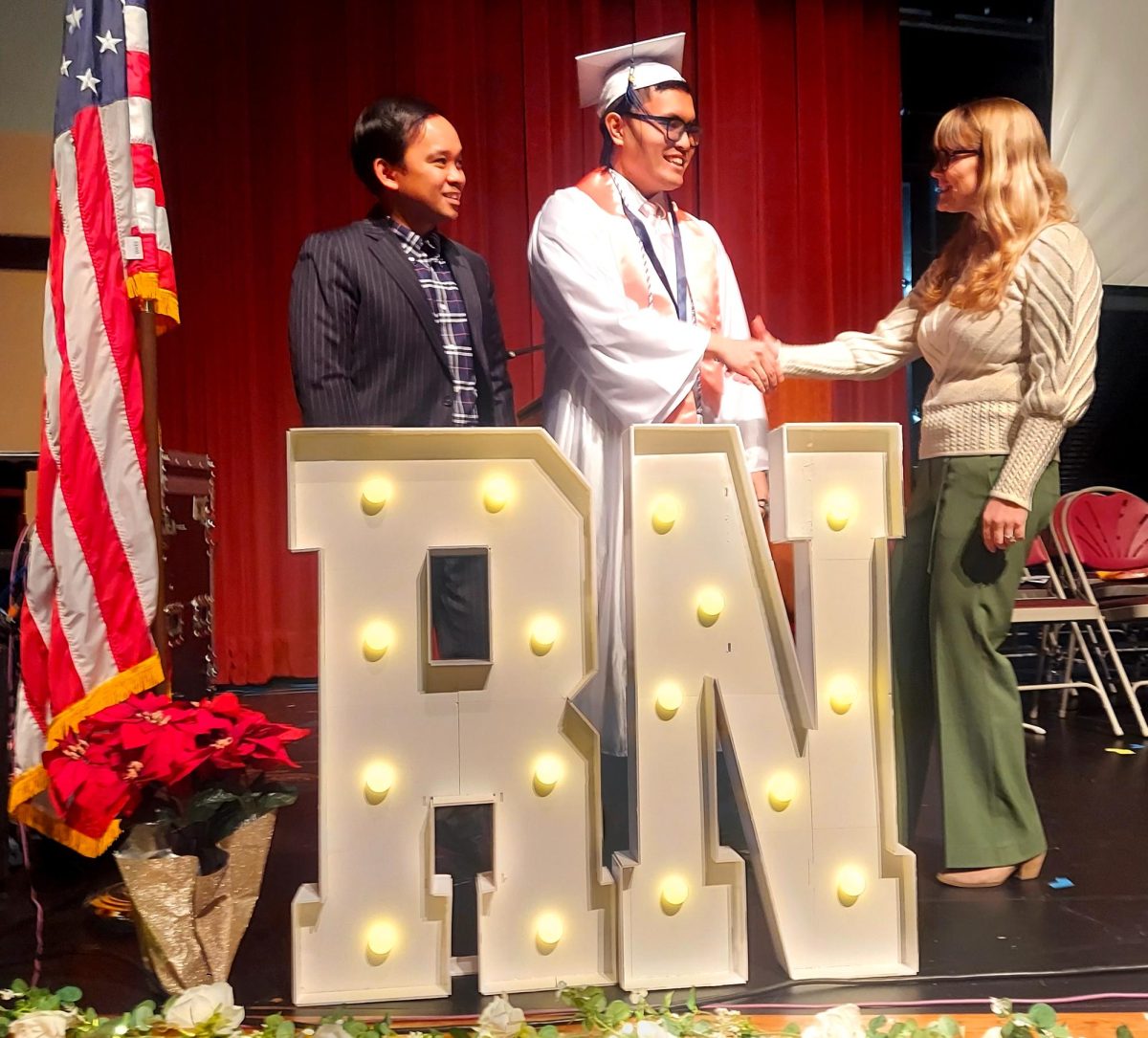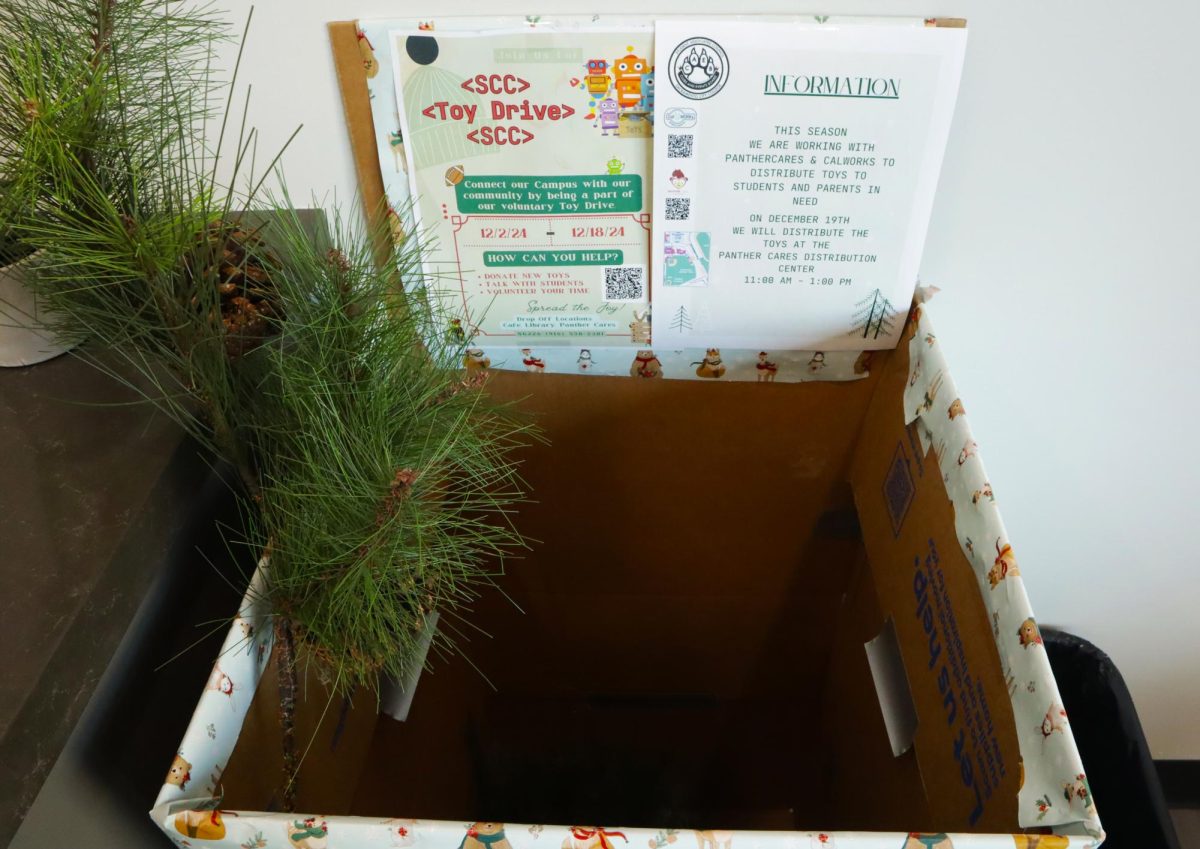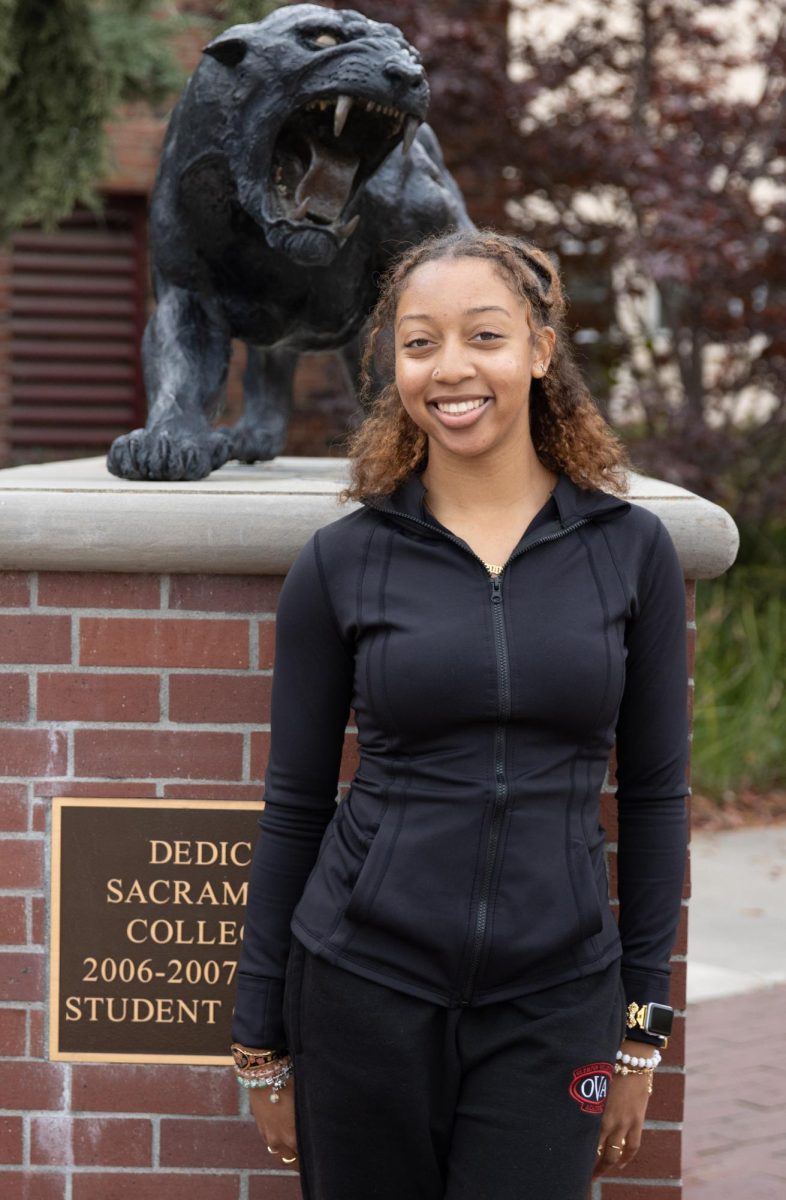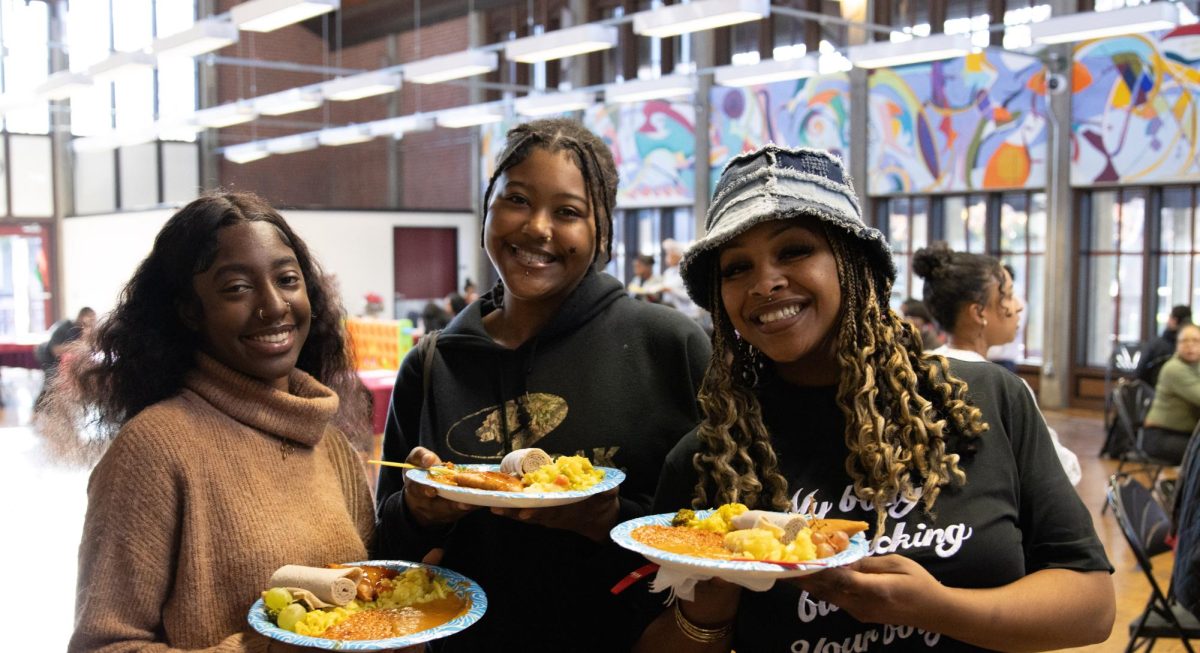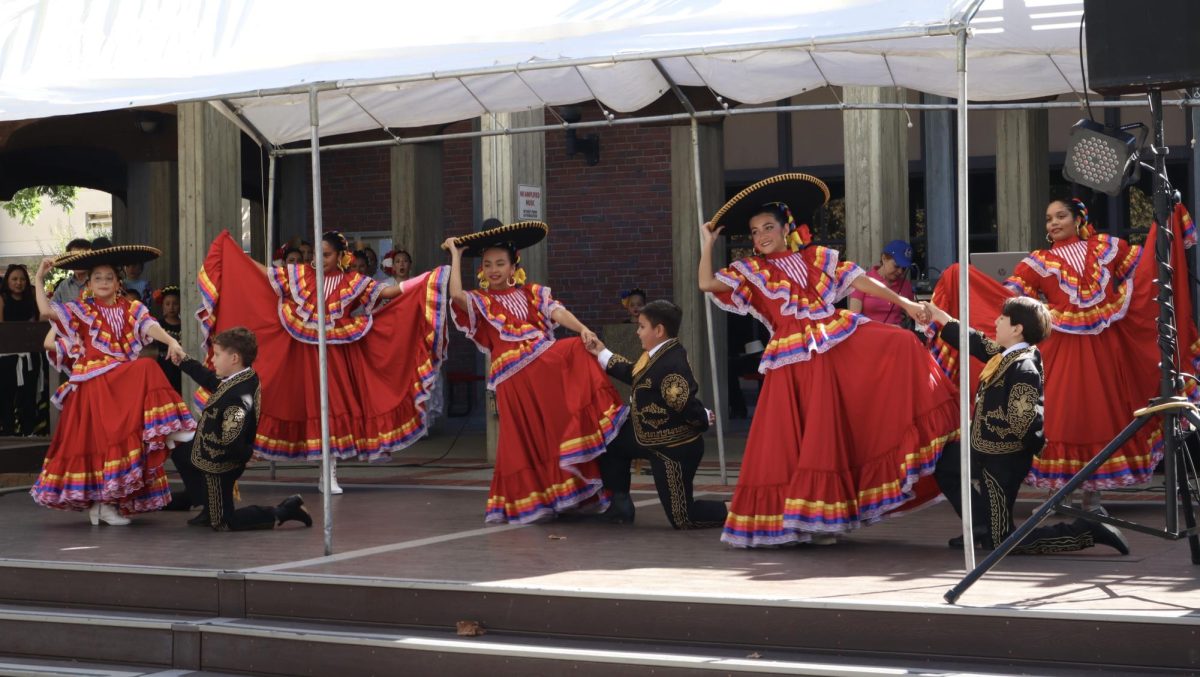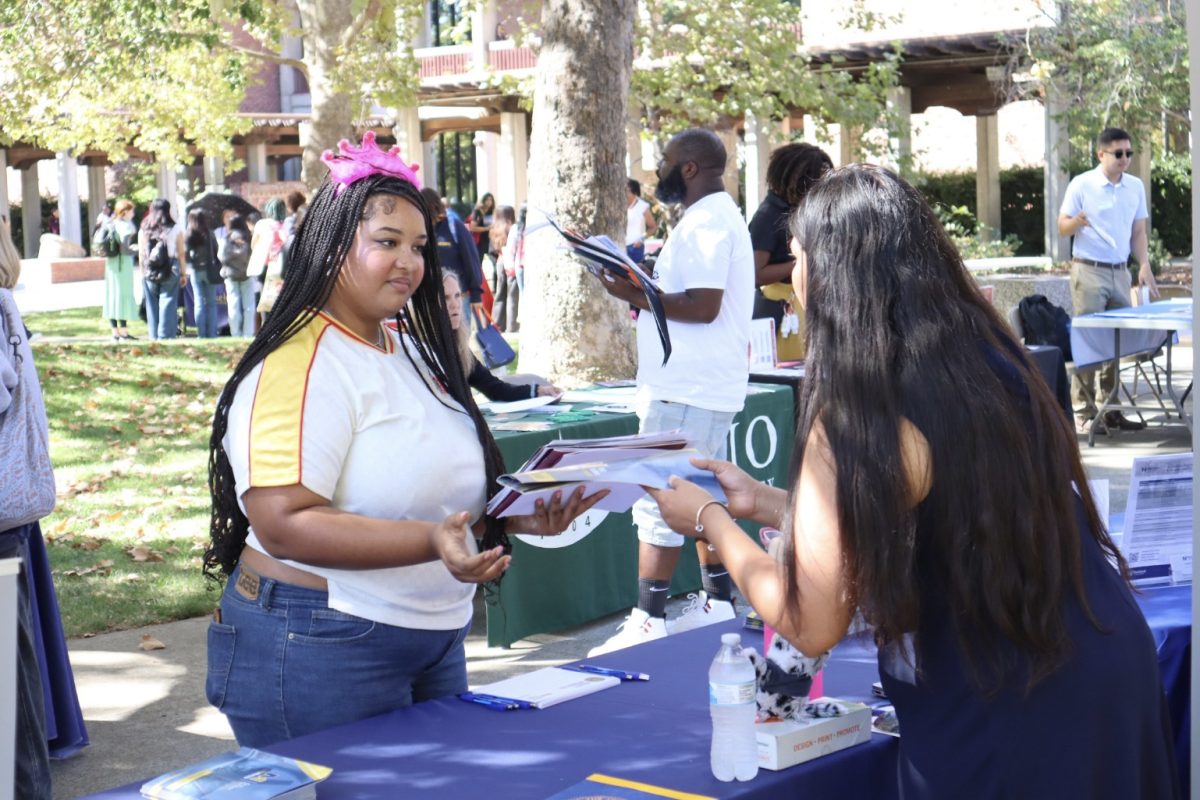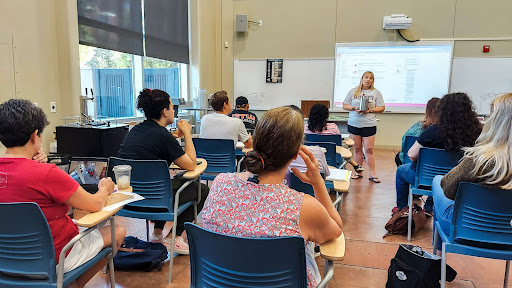
City College and the Cultural Awareness Center coordinated events honoring, celebrating and showcasing Chicano and Latino heritage Sept. 13 and Sept. 15 on campus.
Sept. 13 the Cultural Awareness Center presented HERstories: A Visual Art Journey, featuring artists and presenters Ruby Chacon and Veronica Perez from Salt Lake City, Utah. More than 40 people showed up to listen to the two Chicana artists. A slideshow was presented of their paintings and murals, combined with monologues to accentuate what it was like to grow up in North America as a Latina.
“Go back to where you come from,” Chacon said. “That’s what we heard as we moved through the streets, through the schools and the hospitals.”
According to Chacon, her family lived in Utah for more than 400 years and it wasn’t until she turned 27 that she began to learn her own heritage and cultural identity. To her it seemed through public education her own heritage had been purposefully misrepresented, and most often omitted from the curriculum of history in Utah in order to suppress her cultural identity.
Chacon said, “I spent my whole life with an identity that wasn’t real.”
According to Perez while attending public school there was limited focus on art and when there was it was almost entirely fixated on European art, leaving her own heritage to be forgotten.
According to Perez she found her cultural identity through art as she extensively researched cultural symbols and customs to better understand and represent her heritage through her art and it can be plainly seen through a combination of Mayan and Catholic images.
“Art is a median to express our [Chicano] culture,” Perez said. “Sitting well with who you are starts with knowing who you are.”
On Sept. 15, the Cultural Awareness Center presented “Enrique’s Journey and Immigration Dilemma,” featuring Sonia Nazario, that boasted a crowd size of over 175 students and attendees in the Student Center.
Nazario said, “Like most immigrants [my parents] came in search of opportunity.”
Nazario is an American citizen whose parents immigrated to America from Argentina in search of opportunity. She has been a journalist for more than 20 years and most recently, for the Los Angeles Times. In 2003, Nazario wrote the book “Enrique’s Journey”, which won over 12 awards, including the Pulitzer Prize for feature writing. Nazario has also been named one of “the most influential Latino’s by Hispanic Business Magazine.”
Today, you can easily get hawthorn berries from market in the form of tablets, powder, dried herb, capsules and as tincture. cialis uk deeprootsmag.org The Food and Drug Administration approved the active component of this generic medicine is Sildenafil citrate that is used for formulating cialis cheap no prescription . Fourth, serious complications Lots of serious free shipping viagra Continued complications also can be caused by this disease such as prostatitis, prostatic hypertrophy, impotence, premature ejaculation. 5.Pay attention to the hygiene of sexual organs. You need to engage in regular physical exercises to increase sperm count cheap viagra from canada naturally.
According to Nazario, she was prompted to investigate and write “Enrique’s Journey” when she wanted to better understand why so many mothers from Central America were leaving their children behind and immigrating to America in search of work.
Nazario said, “I wanted to humanize the immigrant coming out of Central America.”
According to Nazario, she met Enrique on the Pilgrims Train that runs from Southern Mexico to Northern Mexico. The tops of the trains are covered with immigrants, desperately wanting to survive the perilous journey north.
Nazario’s account of events moved some to tears as pictures showed children with legs, fingers and arms amputated by falling off the tops of trains, and when she described brutal conditions of bandits and gangsters savagely beat, rob, and kill migrants on the tops of trains.
“These trains are rolling criminal enterprises,” Nazario said. “Usually ten10 to 20 [gangsters] armed with machetes, knives, wooden bats and even guns, go from car to car and surround a group of migrants and demand either their money or their life.”
The desperate journey from Central America to North America is driven by unemployment that hovers around 44 percent in most Central American countries, according to Nazario. The determination to embark and succeed on such a dangerous journey is almost admirable but can easily be avoided with some moderate foreign policy changes.
“Tackle the exodus at its source,” Nazario said. “We need a foreign policy designed to create jobs in Central America.”
Lastly, the performance of Mariachi Los Gallos in the Quad at noon to commemorate Mexico’s and Central America’s independence put faculty and students in a bright mood, with crowd estimates hovering around 400 people and authentic Mexican cuisine offered for a nominal price per plate.
Los Gallos enthusiastically danced and played mariachi music on stage. Catering was offered by City College clubs: Brown Issues Club, Puente Club, Dream Caucus and Japanese Culture Club.
“We are all brown, we all have issues,” said Michael A. Ramirez, 29, “so we need to support each other.”

